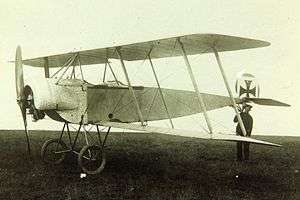Fokker B.II (1923)
The Fokker B.II was a reconnaissance flying boat built in the Netherlands in 1923 to be used by warships. It was a conventional flying boat design with sesquiplane wings braced with N-struts. The engine was mounted tractor-fashion on the leading edge of the upper wing. Open cockpits were provided for the crew under the upper wing and in a dorsal position amidships. The Royal Dutch Navy tested the prototype, but no production order followed.
Specifications
General characteristics
Performance
References
Fokker B.II
The designation B.II was used for two completely unrelated aircraft produced by Fokker:

Fokker M 10
The Fokker M 10 was a two-seater reconnaissance / fighter-trainer biplane with single-bay wings equipped with wing-warping controls for roll, powered by a 7-cylinder 80 hp Oberursel U.0 engine. Several M 10 aircraft were purchased by the Imperial and Royal Aviation Troops of Austro Hungary
During the First World War the Imperial and Royal Aviation Troops (colloquially known as the Austro-Hungarian Air Service or K.u.K. Luftfahrtruppen) lacked aircraft production capacity, purchasing aircraft from its German ally. In 1916 the Fokker M 10 was acquired in two versions, with single-bay wings as the Fokker M 10E (E for Einstielig), known to the Luftfahrtruppen as the Fokker B.I), and the Fokker M 10Z (Z for Zweistielig), with two-bay wings (known by the Luftfahrtruppen as the Fokker B.II).
The single bay winged M 10E (B.I) was powered by an 60 kW (80 hp) Oberursel U.0 7-cyl. rotary engine and was derived directly from the earlier Fokker M 7, which had been operated by the Naval air service of the Kaiserliche Marine from 1915. The aircraft were almost identical with the exception of revised and strengthened undercarriage and centre section cabane struts.
Podcasts:

